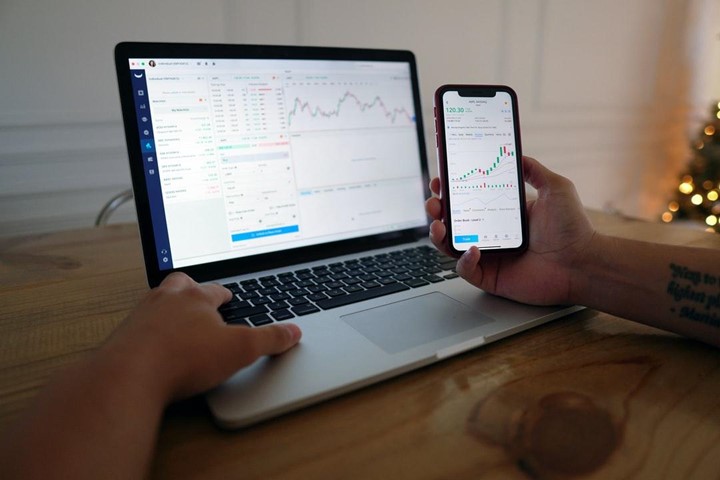
Exchange-traded funds (ETFs) have emerged as a preferred form of investment for many investors, given the benefits they offer over mutual funds. However, direct indexing has also emerged as a viable alternative to ETFs.
On the surface, directing indexing is not that different from ETFs, but the subtle differences that are there can offer more personalization. That, of course, sits well with investment and wealth managers who can diversify investments seamlessly to reduce risk.
For both investors and advisors, it’s essential to understand what direct indexing is and how it fares against ETFs. We’ll discuss both below.
What is Direct Indexing?
Direct indexing is an investing strategy that allows investors to buy securities in an index directly, such as the S&P 500 index. This is done by buying those stocks individually and replicating the weight as the index. In comparison, ETFs and mutual funds track the index and are not part of the securities in the index.
Investors can hold all the stocks in an index and can also sell the stocks in the index that go down. It’s a sound investment strategy that gives investors direct exposure to the index of their choice. That, in turn, allows them more flexibility in mixing the assets as per their needs.
What is an ETF?
An exchange-traded fund or ETF is a type of security typically tied to an index on the stock market. They can also track other assets like commodities. ETFs are traded on the stock exchange, similar to stocks. ETFs are made of a diverse set of assets, including bonds, stocks, commodities, and other assets.
Like stocks, ETFs can be traded throughout the day.
How Do ETFs Vary from Direct Indexing?
In essence, both ETFs and direct indexing are tracking an index. However, the difference arises in the ownership of the securities themselves. With direct indexing, you’re buying the same stocks as in the index, so you have total ownership.
In contrast, an ETF share doesn’t confer direct ownership. The ownership is limited to the ETF, not the constituent holding.
In other words, the basket of securities in an ETF only has indirect exposure to the index, whereas, with direct indexing, the securities offer direct exposure.
Here’s a quick comparison between the two investment instruments:
| Direct Indexing | ETFs | ||
|---|---|---|---|
| Ownership | Direct ownership of the index holdings | Indirect ownership through ownership of ETF shares | |
| Minimum Investment | $250,000 to $500,000 | $1 | |
| Tracking Error or Deviation | Higher | Single-digit | |
| Loss Harvesting | Stock-based loss harvesting | Portfolio-based loss harvesting | |
| Customization | More flexibility with removing holdings | No flexibility of customization | |
Ownership
This is the primary difference between direct indexing and ETFs. Unlike ETFs, you actually own the holdings that mimic an index. This way, advisors and investment managers can create a personalized portfolio, where they can easily drop the holdings that don’t align with the investor’s needs and vision.
However, at the same time, you have to be careful not to remove too many of the holdings. Because then the portfolio will become much different from the index. That would essentially beat the purpose of direct indexing.
In contrast, ETFs don’t offer complete ownership of the securities in the index. Those securities are in an ETF whose share the investor owns. So even though it has the same constituent holdings as the index it tracks, investors don’t have ownership.
Tax Efficiency
The biggest advantage of direct indexing is that it is more tax-efficient than ETFs. This is one of the driving factors behind the popularity of direct indexing.
For securities that do well, investors make capital gains. At the same time, the securities that don’t do well help offset capital gains taxes. As a result, investors walk away with more profit and have to pay less tax.
That’s not the case with an ETF share. While you can use ETF for loss harvesting only through selling the position entirely, regardless of which holding did well and which didn’t.
Minimum Investment
This is where ETFs shine over direct indexing, as ETFs were essentially designed to allow retailer investors a slice of the pie without very high minimums. Direct indexing requires a lot more capital because it requires separately managed accounts.
Bottom Line
Direct indexing is becoming increasingly popular with advisors and investors, but it hasn’t brought an end to ETFs. For many, ETFs remain an accessible way to invest in the market.
It all comes down to what’s best for the client. Whether you’re considering ETFs or direct indexing for your clients, a comprehensive platform like Qdeck can help you model different portfolio approaches by leveraging cutting-edge artificial intelligence.
DISCALIMERS:
Qdeck is a registered Commodity Trading Advisor with the Commodity Futures Trading Commission (“CFTC”) and a Member of the National Futures Association (“NFA”).
Investment in any Qdeck program is speculative and involves significant risk of loss. There can be no assurance that the programs will be able to realize its objectives. Programs may not be available in all jurisdictions, and investments may not be suitable for all investors. Information is subject to change without notice. PAST PERFORMANCE IS NOT NECESSARILY INDICATIVE OF FUTURE RESULTS.
